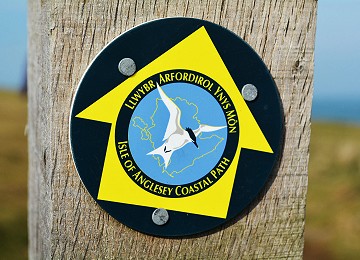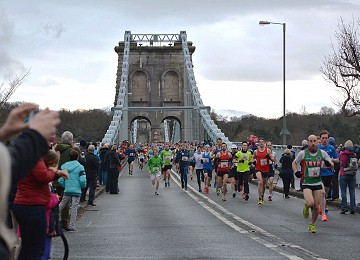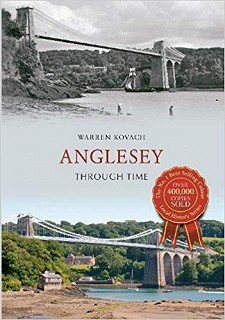the menai suspension bridge
Before the Menai Suspension bridge was finished in 1826 there was no physical connection between Anglesey and the Welsh mainland.
Thomas Telford, (1757 - 1834) a Scott by birth was the civil engineer responsible for the Menai Suspension Bridge and indeed several other bridges in North Wales.
When it was built, the Menai Suspension bridge was the largest suspension bridge in the world.

During 1819 Thomas Telford started a new project to improve the journey between London and Holyhead and one of his biggest challenges was the building of the Menai Suspension bridge.
For many hundreds of years the trip from Anglesey and the mainland had often been extremely hazardous, the many ferries that ran from the various places along the Menai Strait were caught out by the strong currents and tides resulting in loss of life, both to human and animals.
One of the main sources of income on Anglesey were from the sale of Cattle and sheep. In order to get them to the bigger markets on the mainland they had to cross the Menai Strait at its narrowest point, Menai Bridge they were forced into to this dangerous stretch of water often resulting in a loss of life due to the trecherous waters.
With the port of Holyhead being a primary point for ferries to cross over to Dublin in Ireland, the engineer Thomas Telford was asked to under go a survey for a route between London and Holyhead.
On completion of this survey he proposed that a bridge should be built over the Menai Strait between Menai Bridge and the Bangor shoreline opposite.
Whilst the Menai Suspension Bridge was being built, it’s world renowned civil Engineer Thomas Telford, known as “Colossus of roads” resided at Towyn lodge in Trearddur bay and a plaque is still displayed there to this day as a reminder.

Telford submitted a proposal of the Menai Suspension bridge with the two main towers built as close to the shores on either side of the Menai Strait was accepted by Parliament and the contruction of the Bridge was started in 1819.
Like it’s sister bridge, the Britannia Bridge was also to be built from locally sourced limestone from Penmon quarry near Beaumaris.
This was to become part of the historic route between London and Holyhead and forms part of the A5 which is still in use today.
The Menai Suspension bridge opened on the 30th January 1826, nearly 190 years ago and at the time was the largest suspension bridge in the world.
Originally there were 16 (wrought iron) chains that helped to hold up the 176 metre length of road which spanned the Menai Strait at its narrowest point.
Each chain measured 522 metres and weighed a staggering 121 tons. The original roadway was only 24 ft wide. At that time there were no stiffening trusses, with the original decking which was made of wood, it soon proved to be highly unstable in strong winds. In 1840 the deck of the Menai Bridge was strengthened and in 1893 the existing wooden deck was replaced with a steel one.
When the bridge was originally built it was designed with a weight restriction of 4.5 ton, as time passed by with the ever increasing volume of vehicular traffic this became a problem and it was decided in 1938 to replace the original wrought iron chains with steel ones.
The Menai Suspension Bridge is a Grade 1 listed building and is also a World Heritage Site, a section of the Anglesey Coastal Path travels underneath the bridge and then along the Belgian Promenade.

Anglesey Coastal Path
The Anglesey Coastal Path, which circumnavigates 125 miles around Anglesey, most of it following it’s beautiful coastline, comprises of 12 different sections.
Section 7 of the Anglesey Coastal path which travels from the beautiful coastal town of Beaumaris along the Menai Strait under Thomas Telford’s Menai Suspension Bridge along the Belgian Promenade passing Church Island along the Menai Strait, through CoedMor, then up past the Britannia bridge and past the Britannia stone lions.
This is a stunning section of the Anglesey Coastal Path.
The map link to this section of the Anglesey Coastal Path is here











